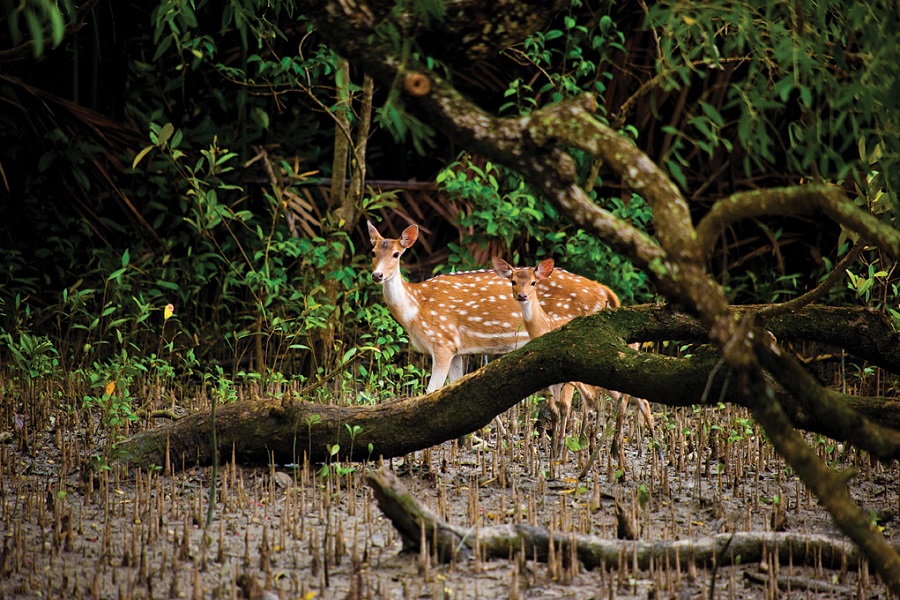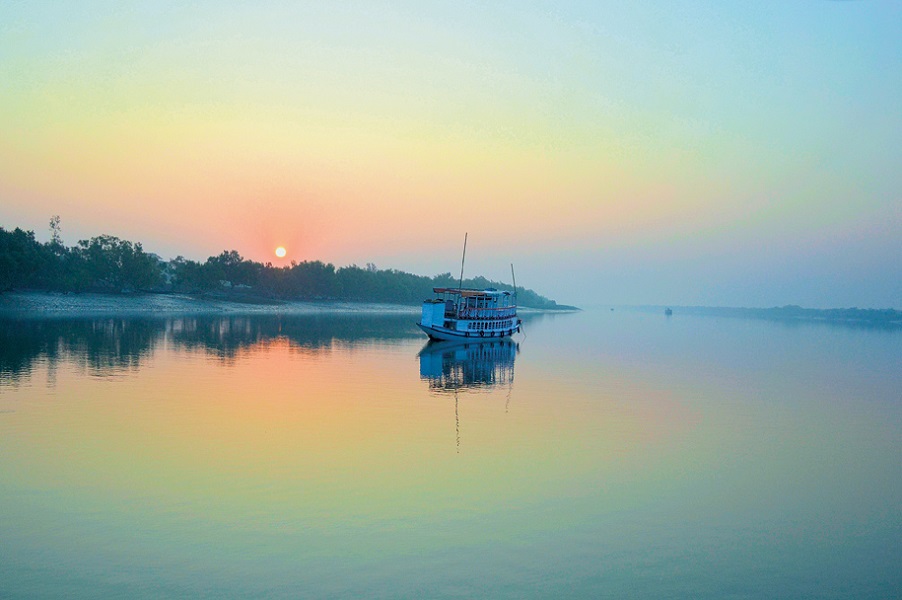Tigers may be hard to find amid the wild, watery labyrinth of West Bengal’s tide country, but the experience is unforgettable
By Todd Pitock
In a jungly island in the Ganges Delta, I step from my thatched bungalow and am transfixed by a spangled cosmos, a sky lit with sparkling sequins. It is not, let’s face it, easy to be awed anymore. This idea was reinforced for me a few days earlier at the Taj Mahal, which was jammed with people setting up trick shots with their cameras to make someone appear to be holding the mausoleum’s dome between their fingers. This, before tour guides on autopilot herded them through the architectural wonder.
The night sky, here in the Sundarbans, is something different altogether. Sensing my excitement, Shambhu Sinha Roy, my guide, offers a polite but reproving smile. “It would be better if you didn’t go out at night,” he says.
“Tigers?”
“Well … no. Snakes,” he replies. “And scorpions. It’s not really a problem. Well, but you never know.”
A former insurance agent from Kolkata, Roy speaks and moves with the slow elegance of a swami. A few years ago, he visited this prelapsarian tide country—a jumble of more than 100 mangrove-knitted islands bordering the Bay of Bengal on both sides of the India-Bangladesh border—and felt induced to stay. It is a wild place, populated with fierce animals and dotted with small villages where cattle dung remains the primary source of fuel. Visitors might feel they were stepping into The Jungle Book, except that aside from designated settlements, the mangroves are so thick and dangerous that it is forbidden to step here at all. Instead, you move slowly by boat along the rivers and creeks that divide the islands.
I rode three hours from Kolkata by SUV before an hour-long boat ride deposited me at the Sundarbans Jungle Camp, an award-winning eco-resort comprising a few bungalows and an open-air dining room and appended to a village of 6,000 people. When I arrived there was a lovely calm to the place, making serenity easily mistakable for security. But the Sundarbans can be perilous, a setting for monsoon storms and floods and a home for crocodiles and estuarine sharks. More famously, it is also a reserve of the Bengal tiger, a rare feline that subsists on spotted deer but will consume a Sundarbans villager every couple of weeks or so.
Hoping to glimpse one, I hop on a small boat with Roy. The waterways widen and narrow as we move between dense stands of trees and broad expanses of sea and sky. Roy and I are joined by the guard-cum-guide that the West Bengal Forest Department required me to have along, as well as the pilot and two deckhands who periodically fetch tea as we drift, all peering into impossibly dense foliage for signs of wildlife. I am astonished to remember that more than four million people live in the Sundarbans—during eight hours plying the water, we see only a handful of fishermen casting nets from their wooden skiffs. What we do see in abundance are birds: kingfishers, egrets, and herons, their wings pulling colorful chests and heads against the sun-bleached sky. A massive white crocodile suns on a bank, and everyone leaps to attention. The deckhands brandish their cellphones to take photos.
Of course, what we most want to see is a tiger, but that’s no easy feat: according to the forestry department, only 103 tigers live in the Indian side of Sundarbans, a 4,260-square-kilometer area of which more than half is protected as a national park. Still, they rule this jungle like Kipling’s Shere Khan, and their presence haunts the forest. Ignoring the risk, and in contravention of the law, locals sometimes venture into the mangrove forests to gather honey, first offering prayers for the protection of Bon Bibi, a guardian deity revered by Hindu and Muslim residents alike.
For hours, I maintain faith that I will be blessed with a tiger sighting, and when suddenly we spot fresh paw prints pressed into the muddy bank, our hopes soar. The pilot slowly turns the boat and kills the engine. There we sit, bobbing, until I realize that I’ll have to be content seeing only the birds and a few crocs.
Back in the village, I meet a man who, not long ago, hadn’t wanted to locate a tiger. He was collecting crabs, he says, when a cat sprang and clawed out his right eye. Now his eyelid hangs flaccidly over the empty socket, and scars mark his chest and calf. The man can’t get help for his injuries, because explaining how he got them could invite prosecution. “He talks too much,” says the fellow who has introduced us. “He tells too many people. He’s going to get himself into trouble.”
Sometimes, though, bad luck can find you even when you do as you’re told to avoid it. Each night, because power from the camp’s solar panels is limited, the electricity cuts out at midnight. At least, it’s supposed to. Later that same night, I am woken by a bright lightshining through my window, reflecting off the ceiling and illuminating my room. Convinced I won’t sleep until I’ve turned it off, I get up and go outside. This time I don’t gaze at the stars. I look for snakes, scorpions, and you-never-know. The switch takes a while to find. I go back to bed.
In the morning, I refrain from confessing to Roy. He has a bemused look on his face, like someone who wants to share something important.
“Did you hear?” he asks.
“Hear what?”
“There was a tiger in camp last night!”
Sundarbans Jungle Camp offers one- to five-night packages starting at US$440 for two, including return transfers from Kolkata, guided boat safaris, village tours, and all meals.
This article originally appeared in the June/July 2014 print issue of DestinAsian magazine (“A Place in the Sundarbans”).











